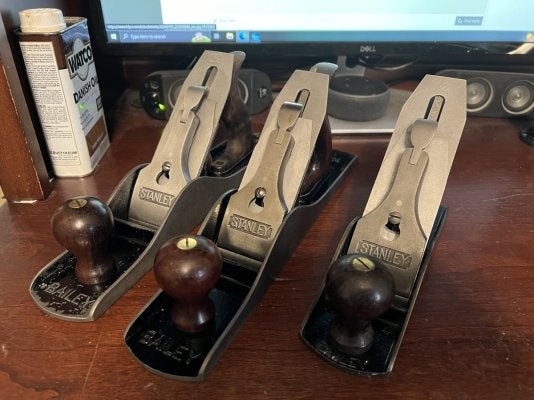jgwjgwjgwj
TDPRI Member
How much should I expect to pay for a decent Stanley no 5? I'm basically new to hand tools. I want to try a jack plane for flattening blanks (with other planes to follow), but I don't want to get fully into plane restoration - so I guess something that has not too much rust but might need sharpening and a bit of flattening.
Today on ebay in Canada, with shipping, it looks like $120 CAD ($85 usd) is where non- damaged ones start.
Today on ebay in Canada, with shipping, it looks like $120 CAD ($85 usd) is where non- damaged ones start.







